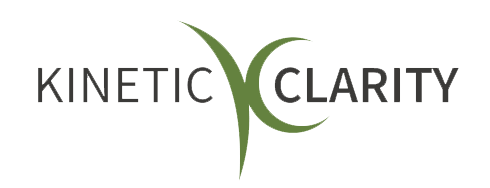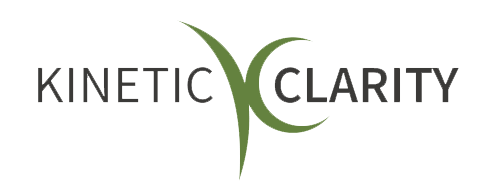Navigating the VUCA World: A Guide for Executives and Teams
Learn how to lead, manage, and thrive in a constantly changing, uncertain environment.

Are you searching for effective ways to lead, manage and thrive in a constantly changing, uncertain environment? Good news! You aren’t alone! Many of the individuals I work with find themselves struggling to solve key problems that are common in today’s VUCA world. We have a complex and rapidly changing business environment; being able to navigate this environment is important for executives and teams.
But what is VUCA? How does VUCA impact your organization? More importantly, what can you do about it?
Let’s talk.
Understanding VUCA in Today's Business World
VUCA is a framework for acknowledging the nature of difficult conditions and situations. It represents:
- Volatility: The nature and dynamics of change, and the nature and speed of change forces and change catalysts.
- Uncertainty: The lack of predictability, the prospects for surprise, and the sense of awareness and understanding of issues and events.
- Complexity: The multifaceted problems, confounding of issues, and chaos and confusion that surrounds an organization.
- Ambiguity: The haziness of reality, the potential for misreads, and the mixed meanings of conditions; cause-and-effect confusion.
Where did VUCA come from?
The term VUCA originated from the U.S. military at the end of the Cold War to describe the more complex, turbulent, and unpredictable world that emerged. It was a way to reflect on the new realities of warfare and strategic defense.
How did VUCA become a business term?
VUCA was adopted into the business lexicon as leaders recognized that this military term described their own world of boardrooms and balance sheets just as accurately. It’s snappy, memorable, and as it turns out, incredibly useful for summing up the rollercoaster ride of modern business.
The adoption of VUCA into business language reflects the understanding that the corporate sector shares similar complexities and the unpredictability of the military. The strategies to survive and thrive in both are also eerily similar: stay nimble, expect the unexpected, and maybe, just maybe, keep a stash of emergency snacks.
Seeking strategies that allow us to adapt to these conditions is the goal, while maintaining a competitive edge and ensuring the resilience of your organization. In other words, we have to learn how to keep our cool, even when the business world decides to imitate a high-octane movie.
Are we still living in a VUCA world?
Absolutely. From technological advances to political shifts and the ongoing impacts of global events like the pandemic, our business environment is characterized by constant change and uncertainty. The business world is like a rollercoaster that's forgotten how to stop – constantly changing, endlessly uncertain, and always keeping us on our toes.
In such a world, getting to grips with VUCA isn't just helpful; it's as essential as your morning coffee. This reality makes understanding and navigating the VUCA world more essential than ever.
Navigating the Elements of VUCA
Each aspect of VUCA presents unique challenges and requires specific strategies:
Leadership in a Volatile Environment
Volatility is demonstrated by sudden and significant changes in the stock market.
When rapid and unpredictable changes are the only constant, leaders and organizations need to find ways to adapt quickly and effectively to new challenges, market shifts, and technological advancements. Leaders often find themselves in a volatile environment, where change doesn’t just knock politely on the door, it barges in like an unwanted house guest.
In such a volatile business landscape we need to exhibit agility and foresight. Technological advancements, cultural dynamics, and regulatory shifts have a lot to do with this volatility, influencing products, services, and customer preferences.
Adaptability is key. For instance, the automotive industry, particularly the rise of Tesla, showcases how traditional manufacturers had to rapidly adapt to the electric vehicle revolution, redefining their innovation strategies to compete.
Executive coaching can be an excellent tool in this context. It equips leaders with the necessary skills to manage these swift transformations, fostering adaptability and resilience. This form of coaching focuses on enhancing a leader’s ability to anticipate changes, make quick decisions, and manage crises effectively.
Dealing with Uncertainty
Uncertainty in the VUCA context refers to the challenge of making decisions based on past experiences and historical data. This data source is rapidly losing its predictive power. Shrinking product life cycles and the accelerated pace of change in markets demonstrate this uncertainty.
For example, in the telecommunications sector, rapid advancements in technology have drastically altered the landscape. The shift to 5G is one rapid advancement that affected market leaders like Samsung. Such scenarios highlight the diminishing effectiveness of traditional market analyses and the need for a new approach to decision-making in uncertain times.
Team coaching is instrumental in creating an environment that embraces uncertainty. By fostering open communication and collaborative problem-solving, your teams are better equipped to navigate unpredictable environments. This “compass” approach encourages continuous learning and adaptability, enabling teams to respond swiftly and effectively to new challenges.
Complexity and Decision-Making
The business world is going through an unprecedented level of complexity, with interconnected factors creating a labyrinth of challenges. This complexity is driven by new technologies, regulations, globalization, and ever-changing customer demands.
For instance, the retail sector's transformation with the advent of e-commerce giants like Amazon disrupted traditional retail models. This illustrates the complex interplay between technological advancements and market dynamics. The situation highlights the need for leaders to employ critical and systemic thinking to navigate this complexity.
Culture coaching provides a pathway to manage complexity. It helps organizations create a culture that embraces complexity and fosters innovation. By breaking down intricate situations into manageable parts, leaders and teams can navigate complex environments more effectively.
Leading Through Ambiguity
Ambiguity in today's world is the equivalent of trying to read a book in the dark. It defies the one-size-fits-all approach, requiring leaders to become adept at interpreting multiple and often conflicting signals. The story of Kodak's failure to adapt to digital photography shows the perils of ambiguity. Despite developing the first digital camera, Kodak hesitated to embrace this innovation, leading to its downfall.
Executive coaching helps leaders enhance their ability to deal with ambiguity. It focuses on improving emotional intelligence, strategic thinking, and decision-making capacity in unclear situations. By developing these skills, leaders can navigate through ambiguity with confidence and clarity.
Developing VUCA-Ready Teams
Building VUCA-ready teams involves preparing your workforce to adapt, thrive, and maintain resilience in the face of uncertainty. This process requires a strategic approach that focuses on developing certain key skills, mindsets, and organizational structures. Here's how you can build VUCA-ready teams:
Foster a culture of agility and flexibility.
Encourage a mindset where change is expected and embraced. Agile teams can quickly pivot in response to new challenges, making them better equipped to handle volatility and uncertainty.
Promote continuous learning and development.
The only constant is change, so continuous learning is crucial. Provide opportunities for skill development, particularly in areas like adaptive thinking, emotional intelligence, problem-solving, and digital literacy.
Enhance your communication skills.
Clear and effective communication is vital in uncertain and complex situations. Ensure your teams have strong internal communication practices and tools that keep everyone aligned and informed.
Develop emotional intelligence (EI).
High EI is essential for navigating the human elements of VUCA. Teams that understand and manage their emotions, as well as those of others, can better handle stress, uncertainty, and interpersonal challenges.
Encourage collaborative problem-solving.
Complex problems often require multiple perspectives to solve. Foster a collaborative environment where team members feel valued and are encouraged to contribute ideas and solutions.
Develop resilience.
Resilience helps teams withstand and bounce back from challenges. Encourage a mindset that views failures and setbacks as opportunities for growth and learning.
Implement scenario planning.
Prepare your teams for different potential futures through scenario planning. This helps in visualizing possible situations and developing strategies to address them, reducing the impact of uncertainty.
Empower your organization’s decision-making.
In a VUCA world, decisions often need to be made quickly and with incomplete information. Empower your teams to make decisions at appropriate levels, reducing bottlenecks and increasing responsiveness.
Cultivate a sense of purpose and clarity.
In times of ambiguity, a clear sense of purpose can guide decision-making and action. Ensure that your team members understand their roles, the team's goals, and how they contribute to the organization's broader objectives.
Practice emotional and psychological safety.
Create an environment where team members feel safe to express their thoughts, ideas, and concerns without fear of negative consequences.
Encourage cross-functional collaboration.
Encourage teams to collaborate with different departments or external entities. This cross-pollination of ideas and approaches can be incredibly beneficial in navigating complex challenges.
By focusing on these areas, you can build teams that are not just prepared to face the challenges of a VUCA world but are capable of turning them into opportunities for growth and innovation.
Cultivating a VUCA-Resilient Culture
In parallel, a VUCA-resilient culture is one that values adaptability and proactivity. Promoting continuous learning, supporting innovation, and empowering employees to make decisions are crucial steps in building such a culture. This environment enables organizations to respond effectively to the unpredictable changes and challenges of the VUCA world.
The Role of Executive Coaching
Executive coaching plays a vital role in equipping leaders with the skills to deal with VUCA challenges. Enhancing emotional intelligence, strategic thinking, and decision-making under uncertainty are essential skills that coaching can develop.
Wrapping Up
Navigating the VUCA world is an adventure that requires courage, creativity, and a touch of humor. By embracing adaptability, fostering resilience, and developing strategic approaches, leaders and teams can not only survive but thrive in this ever-changing landscape.
Remember, navigating the VUCA world doesn’t mean we have all the answers. We don’t need all the answers. What we need is the right mindset to ask the right questions, and the flexibility to adapt as we find those answers.
As we continue to sail through these waters, let's embrace the VUCA world not as a series of hurdles but as a landscape brimming with opportunities for growth, innovation, and transformation. Here's to thriving in the VUCA world and turning its challenges into steppingstones for sustainable success!
Kinetic Clarity | All Rights Reserved |
Created by Olive + Ash.
Managed by Olive Street Design.












